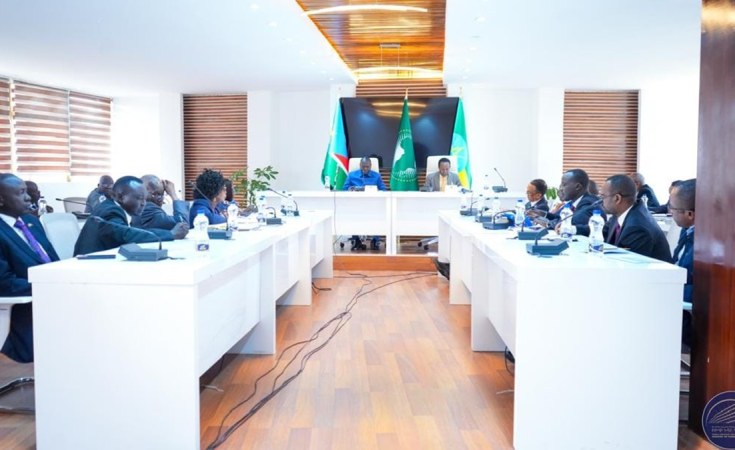Historical Context and Diplomatic Ties
The relationship between Ethiopia and South Sudan is deeply rooted in historical, cultural, and people-to-people connections. The foundation of their current strong diplomatic and political ties began with the Addis Ababa Agreement of 1972, brokered by Emperor Haile Selassie between the Government of Sudan and Anyanya movement leaders. This pivotal agreement began Ethiopia's enduring support for the Southern Sudanese cause, which continued under successive Ethiopian governments.
Ethiopia's commitment to South Sudan's stability was evident during the implementation phase of the Comprehensive Peace Agreement (CPA) and after South Sudan's independence. Ethiopia was one of the first countries to recognize the Republic of South Sudan as a sovereign state, upgrading its consulate in Juba to an embassy in 2011. The solid diplomatic relations have been complemented by multiple agreements aimed at enhancing cooperation in trade, education, security, and infrastructure development.
Common Challenges and Shared Vision
Ethiopia and South Sudan face several common challenges that necessitate a shared vision and collective effort. Despite these challenges, both nations remain steadfast in their commitment to maintaining their diplomatic relations and working together to address them. The deep historical ties, cultural connections, and shared geopolitical interests provide a strong foundation for continued cooperation.
Ethiopia prioritizes deepening economic ties and infrastructure connectivity with South Sudan, recognizing that economic integration is crucial for the mutual benefit of the region's people. While diplomatic and political cooperation is strong, the economic ties, particularly in terms of trade and infrastructure connectivity, are in need of urgent and significant improvement.
Road Connectivity: A Catalyst for Economic Integration
Pagak-Faluj-Malakal Road Project: Generally, three inland outlets connect Ethiopia with South Sudan. The North East, the East, and the South Eastern part of South Sudan with corresponding western parts of Ethiopia. All outlets have all-weather roads from the Ethiopian center to the border posts that connect with South Sudanese territory. However, the roads inside South Sudan are not yet constructed, and the pavements are just for dry seasons. One critical project is the road connecting Pagak, Faluj, and Malakal. Although discussed since 2012, this road remains largely unpaved and only usable during dry seasons. The National Legislative Assembly of South Sudan recently ratified an agreement to finance this road's construction, with Ethiopia's Road Authority poised to commence work. This development, pending ratification by Ethiopia's House of Peoples' Representatives, is expected to boost economic activities and enhance peace in both regions significantly.
The road network will stimulate the economy of Northeast South Sudan and Western Ethiopia, improving the supply chain to the Greater Upper Nile region and reducing inflation. By fostering economic growth, the project will contribute to peace, stability, and prosperity in areas historically affected by conflicts.
Akobo-Pibor-Bor Road Network: Another vital project is the road connecting Ethiopia to South Sudan via Akobo, Pibor, and Bor. Currently, only river transport is available to Akobo. Establishing this road connection will integrate central South Sudan's infrastructure with Ethiopia, including South Sudan's capital, Juba. This road will also expedite the construction of an electric power transmission line, promoting investment and industrial productivity in South Sudan.
Boma-Raad-Kapoeta Road Network: This road aims to connect Ethiopia, South Sudan, and Kenya as part of the LAPSSET (Lamu Port-South Sudan-Ethiopia Transport) Corridor project. While progress has been made in connecting South Sudan and Kenya, efforts are needed to extend this network to Southwestern Ethiopia to realize the LAPSSET vision fully.
Energy Connectivity and Industrial Growth
The road projects will be complemented by constructing electric transmission lines and substations, allowing South Sudan to import electricity from Ethiopia's Grand Renaissance Dam at competitive prices. Energy supply has been a significant challenge for South Sudan, limiting industrial expansion and productivity. Reliable electricity will boost industrial development, create jobs, and improve productivity, particularly in oil fields, reducing production costs and fostering economic growth.
Furthermore, these developments allow the establishment of a refinery at the shared border, processing South Sudanese oil for Ethiopian consumption. Ethiopia's large and growing economy, with a population of about 120 million and a daily oil consumption of over 100,000 barrels, makes this prospect economically viable and beneficial for both nations.
Conclusion
The economic sector must reflect the robust political and diplomatic relations between Ethiopia and South Sudan. Enhanced economic cooperation, mainly through road connectivity projects, will benefit the people of both countries. Completing these road projects will pave the way for deeper economic integration, fostering peace and prosperity in the region. AS
Editor's Note: The author, Markos Tekle Rike, can be reached at markostekle@gmail.com


